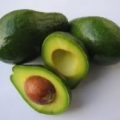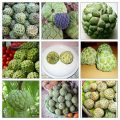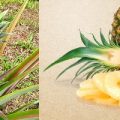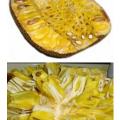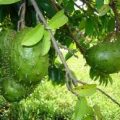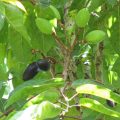Maybe the majority of us Filipinos have seen this red hairy fruit . Indeed, the fruit’s name is derived from the Malay word “rambut” meaning hairy. It is usually eaten raw and has a distinct taste and texture. Although rambutan is categorized as an underutilized fruit, it is considered as one of the promising commercial crops.
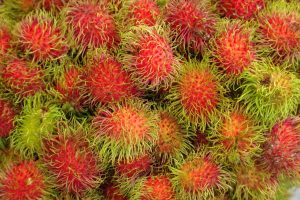
Nephelium lappaceum L., commonly known as rambutan in the Philippines, it comes from family Sapindaceae. The fruit is also called ramboutan or ramboutanier in French, ramboetan in Dutch, ramboostan in India, shaotzu in Chinese, and chomchomor vaithieu in Vietnamese. The underutilized fruit is native to Malaysia and it was introduced to many tropical countries including the Philippines during prehistoric times.
The tree is medium to large-sized, about 15-25 meters high. Leaves are even pinnate with 2-4 pairs of leaflets. Leaflets are 10-20 centimeters long, elliptic to obovate, thin but leathery and dark green. Numerous small, greenish white flowers are in panicles on shoot tips. Rambutan fruits are globose to ovoid, 4-5 centimeters long, yellow or red when ripe and with fleshy spines. Rambutan’s aril is nearly white, translucent, subacid, juicy, and with an oblong or ovoid seed. Rambutan grows well from sea level to medium altitudes in places with a long rainy season. Rambutan can be propagated through seed, (which takes about 10-15 days to germinate) marcotting, inarching, cleft grafting and patch budding. Major pests are fruit borer and oriental fruitfly while the major disease is foot rot.
In the Philippines, flowering occurs from late March to early May while the fruiting season is from August to October. Fruits are harvested when fully ripe on the tree. In order to maintain the quality and freshness, rambutan fruits must be transported to local markets within three days of picking. The yield of rambutan may vary from year to year. Individual trees 8 years old or older can produce as much as 440 lbs or 200 kilograms in the first season, and 132 lbs or 60 kilograms on the next season. In the Philippines, the average production per tree of 21 selections was reported to be 264 lbs or 120 kilograms over a four year period, while the general average is only 106 lbs or 48 kilograms .
Rambutan fruit has 36% edible portion which contains (per 100 grams) 77.6 grams water, 87 kcal energy, 1.2 grams protein, 0.9 grams fat, 18.6 grams carbohydrates, 1.1 grams dietary fiber, 32 mg calcium, 16 mg phosphorous, 0.4 mg iron, 0.02 mg thiamine, 0.10 mg riboflavin, 0.5 mg niacin and 91 mg ascorbic acid.
Rambutan’s different faces
Various rambutan cultivars were introduced from our neighboring countries like Malaysia and Indonesia, but only a few cultivars were eventually adopted in the Philippines. These are Maharlika, Seematjan and Seenjonja varieties. Mature Seematjan is reddish pink, egg shaped and weighs 35-48 grams. Peels and spines are red, soft and long with yellowish pink tips. The edible portion of the fruit is half the weight of the whole fruit, which is thick, juicy and very sweet. The edible portion easily separates from the seed. However, much of the seed covering adheres to the edible portion. Mature Seejonja on the other hand is bright red and smaller than Seematjan. It weighs 16-20 grams and the regularly arranged spines are short and soft. The edible portion is less than half the whole fruit by weight. The edible portion is relative thinner, juicier, sweeter and adheres tightly to the seed. The most popular variety is Maharlika, is round and weighs 19-28 grams with short and widely spaced spines. The outer portion is reddish pink and the spines are red and yellowish pink tips like Seematjan. Its edible portion is half as thick, juicy, sweet, easily separates from the seed and most of the seeds adheres to the flesh.
Special uses and benefits
Have you ever thought that every part of the rambutan tree has medicinal uses as well? Rambutan fruit preferably unripe, can be used as astringent and can help relieve diarrhea and dysentery. Rambutan seeds are effective in reducing body fat and making the skin healthier by eating it raw, mashed or mixed with other foods. Rambutan leaves promotes good hair growth by applying its water extracts to the damp scalp while the leaves are also used as bandage on the temples to soothe headaches. The roots can also be used as a decoction to treat fever. The edible part of rambutan has a high amount of phosphorus which helps filter out waste from the kidneys and is also responsible for growth, maintenance and repair of tissues and cells. The functions of calcium and phosphorus work hand in hand to strengthen bones and teeth.
The edible portion can also be preserved in syrup or jam. Even the shoots of young rambutan can be utilized as one of the ingredients in dyeing silk.
R&D prospects for rambutan
There have been continuing efforts in monitoring and improving the production and marketing of rambutan in the Philippines. As early as 1990s, the Agribusiness Systems Assistance Program (ASAP) reviewed the Philippine situation of rambutan. According to the team of experts, more R & D projects should be conducted specifically on its production and marketing aspects in order to tap the local and export markets. In addition, a continuous search of areas that are suitable for the long-term production of rambutan was recommended. Planting of additional trees in areas which can produce rambutan outside of the traditional season should also be explored. In a rambutan plantation in Davao, for instance, growers can produce fruits during February and March. This breakthrough could probably be our country’s opportunity of exporting rambutan during our competitor’s off-season. In order to effectively penetrate the international market, research must also focus on the objective of increasing rambutan’s production and value-adding, and maximizing refrigerated shipment, coupled with aggressive promotion.
The value-adding aspect of rambutan was ventured in by Mr. Jaime Goyena from the University of the Philippines Los Baños (UPLB Batch 1958) and Associate Member of U.P. Kappa Sigma-Conservation Development Society Alumni Association. As an agriculturist, Mr Goyena was able to breed rambutan (R-5 cultivar) through natural selection and because of this, he garnered the ‘Pinakamatamis na Rambutan’ award given by the Department of Agriculture in the late 1990s. The R-5 cultivar also proved to be the best raw material for wine making. Another passion of Mr. Goyena’s has moved him to test the potential of rambutan and the result is very encouraging and indeed rewarding. In 2006, the Goyena’s Rambutan Wine was a recipient of a special award for one of the best tasting wines given by the Center for International Trade Exposition and Mission (CITEM) of the Department of Trade and Industry (DTI).
Funded under the National Technology Commercialization Program (NTCP) of Department of Agriculture-Bureau of Agricultural Research (DA-BAR), Mr. Jaime Goyena is now implementing a project entitled “Increasing Farm Productivity and Income through Product Diversification: Pilot Scale Commercialization of Wine Products from Indigenous Fruits”. The project specifically aims to (1) test the efficacy and cost effectiveness of a winery system to produce quality tropical fruit wine products on a commercial scale, (2) produce on semi-commercial scale, quality wine products from indigenous, underutilized fruit species namely lipote, abiu, bignay, doromon, Indian mango and rambutan using optimized protocols on wine production and (3) promote cooperative enterprise development and marketing through capability building activities. Technical Consultant and member of the project team, Dr. Edralina Serrano, chooses rambutan as one of the underutilized fruits in producing wine products due to the fruit’s one-week shelf life. “To reduce losses as a result of its perishable nature, the fruit has to be converted (product diversification or value-adding) into a form that adds value to rambutan. Thus, the production of wine from rambutan as a value-adding strategy”, Dra. Serrano added. The project team has purchased and installed the equipment needed for wine making. Capability building activities through training of workers and potential entrepreneurs were also conducted. The project also started to process fruit wines last March 2012. Other fruits in this project, abiu and jackfruit, are under fermentation while pineapple, lipote, bignay and rambutan will be next in line for processing. Hopefully this project will help to increase interest in wine production.
Through R & D efforts, rambutan can prove to be exceptional compared to other more famous fruits. Attaining greater familiarity for rambutan and products made from it may still be a few steps away, but there is confidence that, with its vast potential, this fruit can reach greater heights with its red and spiky crowning glory!
———-
Source:
1. Coronel, Roberto E, Important Underutilized Edible Fruits of the Philippines, University of the Philippines Los Baños Foundation Inc. (UPLBFI) and Department of Agriculture-Bureau of Agricultural Research (DA-BAR), 2011
2. Golla, David VI. 1996. Rambutan: The Versatile Fruit. Marid Agribusiness Digest.6(11): p 8
3. Palacpac-Alu, Anna Marie. 1988.Discover Rambutan: RP’s Lychee. Animal Husbandry and Agricultural Journal. 21(12):p 26
4. www.hort.purdue.edu/newcrop/morton/rambutan.html
5. http://naturecure.ygoy.com/2011/08/31/health-benefits-of-rambutan-fruit/
6.http://www.livestrong.com/article/362917-nutritional-content-of-the-rambutan-fruit/
By: Liza Angelica D. Barral, BAR Digest October-December 2012 Issue (Vol. 14 No. 4)
